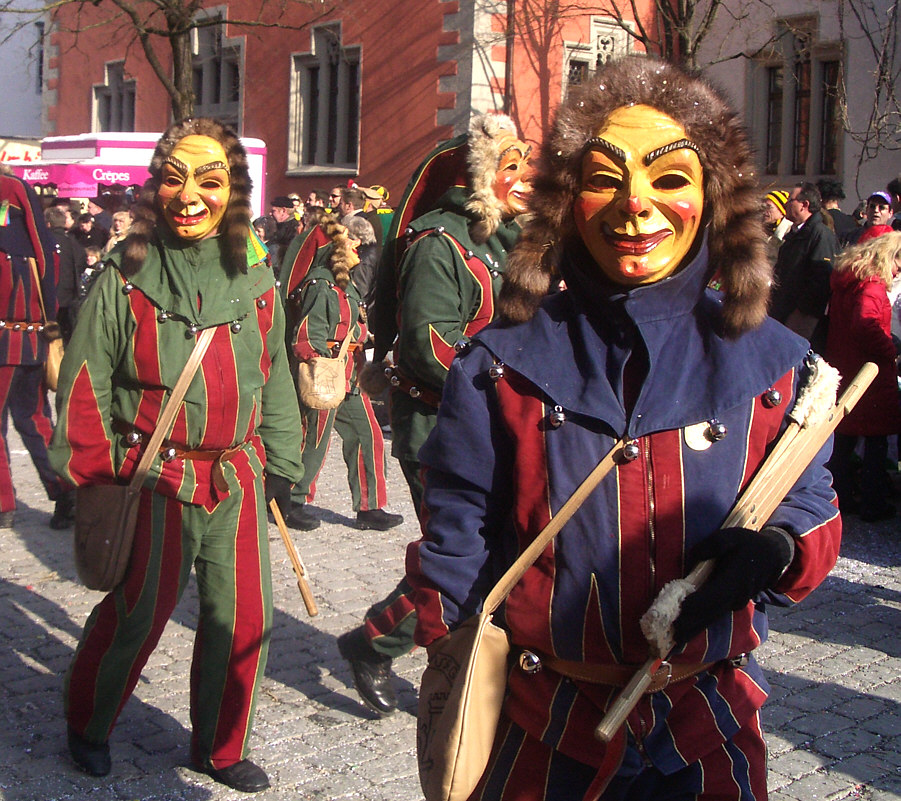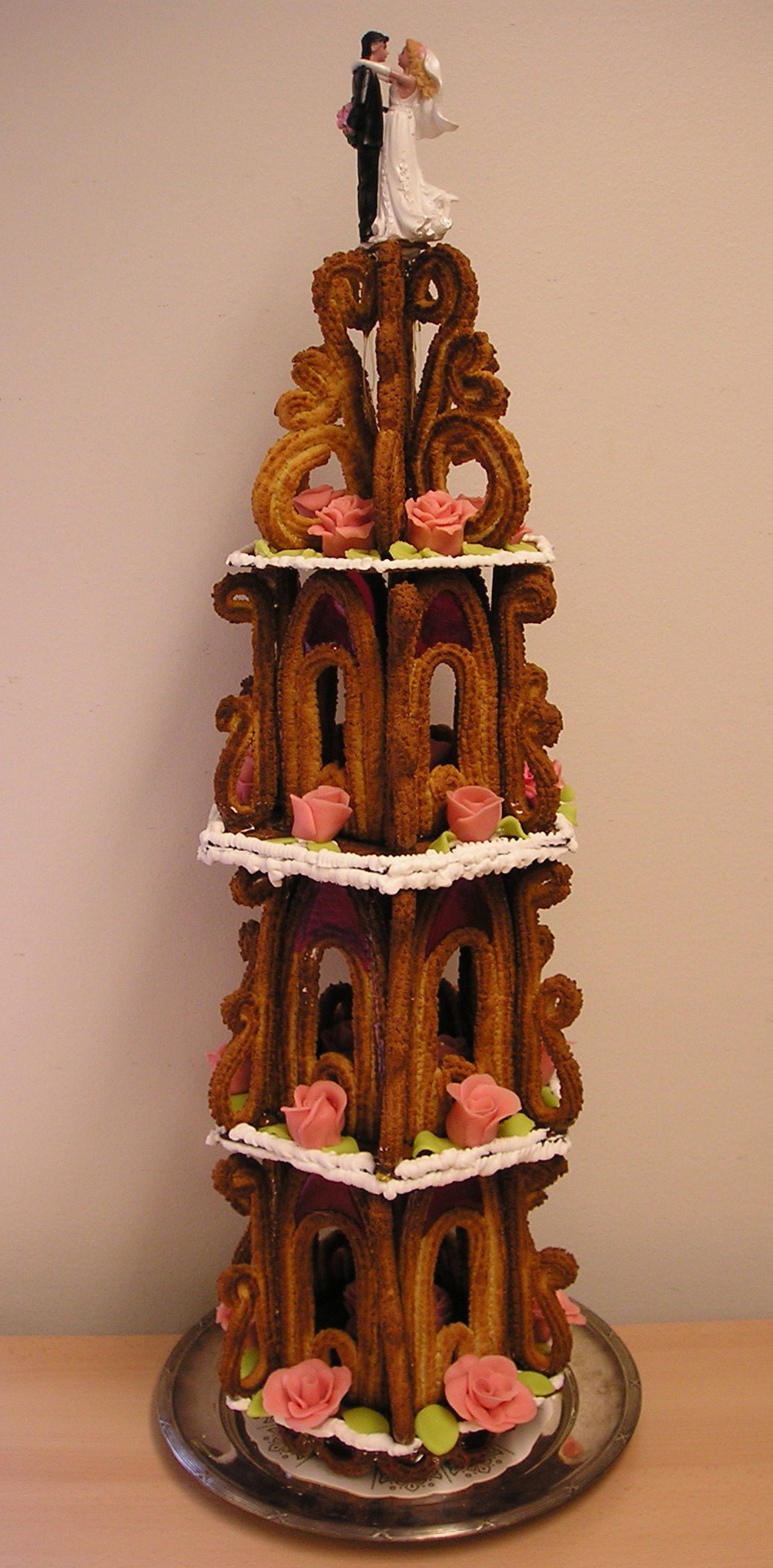|
Carnival Of Basel
The Carnival of Basel () is the biggest carnival in Switzerland and it is the main Protestant carnival in the world. ''Basler Fasnacht'' takes place annually between February and March in Basel. It has been listed as one of the top fifty local festivities in Europe. Since 2017, the Carnival of Basel has been included in UNESCO's intangible cultural heritage. Overview The ''Basler Fasnacht'' starts on the Monday after Ash Wednesday at precisely 4:00 am with the so-called ''Morgestraich'' (#Morgestraich, see below). The carnival lasts for exactly 72 hours and, therefore, ends on Thursday morning at 4:00 am. During this time the ''Fasnächtler'' (the participants) dominate the old town of central Basel, running free in the streets and restaurants. Basler Fasnacht is often referred to as ''die drey scheenschte Dääg'' ("the three most beautiful days"). Unlike the Carnival celebrations held in other cities on the Rhine (such as those in Cologne, Mainz and Düsseldor ... [...More Info...] [...Related Items...] OR: [Wikipedia] [Google] [Baidu] |
Carnival
Carnival (known as Shrovetide in certain localities) is a festive season that occurs at the close of the Christian pre-Lenten period, consisting of Quinquagesima or Shrove Sunday, Shrove Monday, and Shrove Tuesday or Mardi Gras. Carnival typically involves public party, celebrations, including events such as parades, public street party, street parties and other entertainments, combining some elements of a circus. Elaborate costumes and masks allow people to set aside their everyday individuality and experience a heightened sense of social unity.Bakhtin, Mikhail. 1984. ''Rabelais and his world''. Translated by H. Iswolsky. Bloomington: Indiana University Press. Original edition, ''Tvorchestvo Fransua Rable i narodnaia kul'tura srednevekov'ia i Renessansa'', 1965. Participants often indulge in excessive consumption of alcohol, meat, and other foods that will be forgone during upcoming Lent. Traditionally, butter, milk, and other animal products were not consumed "excessively", r ... [...More Info...] [...Related Items...] OR: [Wikipedia] [Google] [Baidu] |
Mask
A mask is an object normally worn on the face, typically for protection, disguise, performance, or entertainment, and often employed for rituals and rites. Masks have been used since antiquity for both ceremonial and practical purposes, as well as in the performing arts and for entertainment. They are usually worn on the face, although they may also be positioned for effect elsewhere on the wearer's body. In art history, especially sculpture, "mask" is the term for a face without a body that is not modelled in the round (which would make it a "head"), but for example appears in low relief. Etymology The word "mask" appeared in English in the 1530s, from Middle French ''masque'' "covering to hide or guard the face", derived in turn from Italian ''maschera'', from Medieval Latin ''masca'' "mask, specter, nightmare". This word is of uncertain origin, perhaps from Arabic ''maskharah'' مَسْخَرَۃٌ "buffoon", from the verb ''sakhira'' "to ridicule". However, it ... [...More Info...] [...Related Items...] OR: [Wikipedia] [Google] [Baidu] |
The Guards "die Garden" Marching In The Cortège Of Basler Fasnacht 2024 3
''The'' is a grammatical article in English, denoting nouns that are already or about to be mentioned, under discussion, implied or otherwise presumed familiar to listeners, readers, or speakers. It is the definite article in English. ''The'' is the most frequently used word in the English language; studies and analyses of texts have found it to account for seven percent of all printed English-language words. It is derived from gendered articles in Old English which combined in Middle English and now has a single form used with nouns of any gender. The word can be used with both singular and plural nouns, and with a noun that starts with any letter. This is different from many other languages, which have different forms of the definite article for different genders or numbers. Pronunciation In most dialects, "the" is pronounced as (with the voiced dental fricative followed by a schwa) when followed by a consonant sound, and as (homophone of the archaic pronoun ''thee'' ... [...More Info...] [...Related Items...] OR: [Wikipedia] [Google] [Baidu] |
Basler Drum
The Basel drum (also known as the Basler or Basle drum) is a two-headed rope-tension drum. It takes its name from its origin in Basel. This percussion instrument is best known from the Carnival of Basel, where it is played by more than 2000 drummers. They are called Tambouren in Swiss German or Tambourins in French. There is no typical number of players for marching-bands including this instrument. Anything between three and fifty drummers may be seen in such a formation. Drums of the same pattern are used throughout Switzerland in fife and drum (or drum only) societies as well as in Swiss Army bands. They are also known as 'Swiss drums' or 'Ordonance 82'. Method of construction Until the late 18th century drums were primarily made of wood. However, it has been demonstrated that brass frames were in use in Prussia since the early 18th century. In the 19th century, copper, tin, and nickel silver were also used. Nowadays, the frame is usually made of chromed brass. There are als ... [...More Info...] [...Related Items...] OR: [Wikipedia] [Google] [Baidu] |
Piccolo
The piccolo ( ; ) is a smaller version of the western concert flute and a member of the woodwind family of musical instruments. Sometimes referred to as a "baby flute" or piccolo flute, the modern piccolo has the same type of fingerings as the standard transverse flute, but the sound it produces is an octave higher. This has given rise to the name ottavino (), by which the instrument is called in Italian and thus also in scores of Italian composers. Piccolos are often orchestrated to double the violins or the flutes, adding sparkle and brilliance to the overall sound because of the aforementioned one-octave transposition upwards. The piccolo is a standard member in orchestras, marching bands, and wind ensembles. History Since the Middle Ages, evidence indicates the use of octave transverse flutes as military instruments, as their penetrating sound was audible above battles. In cultured music, however, the first piccolos were used in some of Jean Philippe Rameau's works i ... [...More Info...] [...Related Items...] OR: [Wikipedia] [Google] [Baidu] |
Organization
An organization or organisation (English in the Commonwealth of Nations, Commonwealth English; American and British English spelling differences#-ise, -ize (-isation, -ization), see spelling differences) is an legal entity, entity—such as a company, or corporation or an institution (formal organization), or an Voluntary association, association—comprising one or more person, people and having a particular purpose. Organizations may also operate secretly or illegally in the case of secret society , secret societies, criminal organizations, and resistance movements. And in some cases may have obstacles from other organizations (e.g.: Southern Christian Leadership Conference, MLK's organization). What makes an organization recognized by the government is either filling out Incorporation (business), incorporation or recognition in the form of either societal pressure (e.g.: Advocacy group), causing concerns (e.g.: Resistance movement) or being considered the spokesperson o ... [...More Info...] [...Related Items...] OR: [Wikipedia] [Google] [Baidu] |
Confectionery
Confectionery is the Art (skill), art of making confections, or sweet foods. Confections are items that are rich in sugar and carbohydrates, although exact definitions are difficult. In general, however, confections are divided into two broad and somewhat overlapping categories: baker's confections and sugar confections. Baker's confectionery, also called flour confections, includes principally sweet pastries, cakes, and similar Baking, baked goods. Baker's confectionery excludes everyday Bread, breads, and thus is a subset of products produced by a baker. Sugar confectionery includes candies (also called ''sweets'', short for ''sweetmeats'', in many English-speaking countries), candied nuts, chocolates, chewing gum, bubble gum, pastillage, and other confections that are made primarily of sugar. In some cases, chocolate confections (confections made of chocolate) are treated as a separate category, as are sugar-free versions of sugar confections. The words ''candy'' (Canada ... [...More Info...] [...Related Items...] OR: [Wikipedia] [Google] [Baidu] |
Confetti
Confetti are small pieces or streamers of paper, mylar or metallic material, usually thrown at celebrations, especially parades and weddings. The origins are from the Latin ''confectum'', with ''confetti'' the plural of Italian ''confetto'', small sweet. Modern paper confetti trace back to symbolic rituals of tossing grains and sweets during special occasions, traditional for numerous cultures throughout history as an ancient custom dating back to pagan times, but adapted from sweets and grains to paper through the centuries. Confetti are manufactured in multiple colors, and commercially available confetti come in many different shapes. A distinction is made between confetti and glitter; glitter is smaller than confetti (pieces usually no larger than 1 mm) and is universally shiny. Most table confetti is also shiny. While they are called metallic confetti they are actually metallized PVC. Most party supply stores carry paper and metallic confetti. Confetti are commonly used at ... [...More Info...] [...Related Items...] OR: [Wikipedia] [Google] [Baidu] |
Basel German
Basel German or (Standard German: ) is the dialect of the city of Basel, Switzerland. The dialect of Basel forms a Low Alemannic linguistic exclave in the High Alemannic region. Phonetics and phonology Consonants Aspirated plosives Basel German is characterised by aspirates which are absent or at least less common in other dialects. Compare Basel German (usually spelled ), pronounced more or less as Standard German , with with initial , used in all other Swiss German dialects, with the exception of the dialect of Chur. Thus, Basel German did not complete the second Germanic sound shift (High German consonant shift). Nowadays, many speakers pronounce the (or � to be more exact), however. There are nevertheless still words that are never pronounced with , for example (Standard German , 'to know') or / (Standard German ). Typically, words from Standard German or Latin are pronounced with aspirated , too, which is not or only to a lesser extent done in other dialects. ... [...More Info...] [...Related Items...] OR: [Wikipedia] [Google] [Baidu] |
Irony
Irony, in its broadest sense, is the juxtaposition of what, on the surface, appears to be the case with what is actually or expected to be the case. Originally a rhetorical device and literary technique, in modernity, modern times irony has also come to assume a metaphysical significance with implications for the correct human attitude towards life. The concept originated in ancient Greece, where it described a dramatic character who pretended to be less intelligent than he actually was in order to outwit boastful opponents. Over time, ''irony'' evolved from denoting a form of deception to, more liberally, describing the deliberate use of language to mean the opposite of what it says for a rhetorical effect intended to be recognized by the audience. Due to its double-sided nature, irony is a powerful tool for social bonding among those who share an understanding. For the same reason, it is also a source of division, sorting people into insiders and outsiders depending upon w ... [...More Info...] [...Related Items...] OR: [Wikipedia] [Google] [Baidu] |
Alsace
Alsace (, ; ) is a cultural region and a territorial collectivity in the Grand Est administrative region of northeastern France, on the west bank of the upper Rhine, next to Germany and Switzerland. In January 2021, it had a population of 1,919,745. Alsatian culture is characterized by a blend of German and French influences. Until 1871, Alsace included the area now known as the Territoire de Belfort, which formed its southernmost part. From 1982 to 2016, Alsace was the smallest administrative in metropolitan France, consisting of the Bas-Rhin and Haut-Rhin Departments of France, departments. Territorial reform passed by the French Parliament in 2014 resulted in the merger of the Alsace administrative region with Champagne-Ardenne and Lorraine to form Grand Est. On 1 January 2021, the departments of Bas-Rhin and Haut-Rhin merged into the new European Collectivity of Alsace but remained part of the region Grand Est. Alsatian dialect, Alsatian is an Alemannic German, Alemannic ... [...More Info...] [...Related Items...] OR: [Wikipedia] [Google] [Baidu] |







